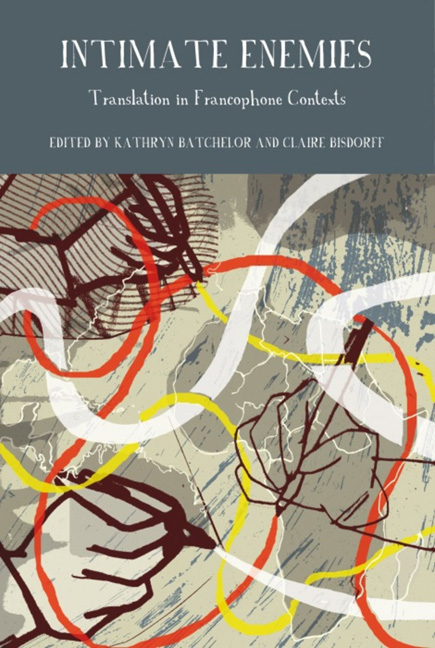Book contents
- Frontmatter
- Contents
- Illustration
- Acknowledgements
- Introduction: Translation – Formidable Enemy or Needed Friend?
- The Translation Market: Publishing and Distribution
- Writing and Translating in Practice
- Intimate Enemies: A Conversation between an Author and her Translator
- Translation: Spreading the Wings of Literature
- Translation – A Listening Art
- Ananda Devi as Writer and Translator: In interview with Julia Waters
- The Négraille's Testament: Translating Black-Label
- Translating Heterophony in Olive Senior's Stories
- Translation Challenges and New Avenues in Postcolonial Translation Theory
- Notes on Contributors
- Index
Translation – A Listening Art
from Writing and Translating in Practice
- Frontmatter
- Contents
- Illustration
- Acknowledgements
- Introduction: Translation – Formidable Enemy or Needed Friend?
- The Translation Market: Publishing and Distribution
- Writing and Translating in Practice
- Intimate Enemies: A Conversation between an Author and her Translator
- Translation: Spreading the Wings of Literature
- Translation – A Listening Art
- Ananda Devi as Writer and Translator: In interview with Julia Waters
- The Négraille's Testament: Translating Black-Label
- Translating Heterophony in Olive Senior's Stories
- Translation Challenges and New Avenues in Postcolonial Translation Theory
- Notes on Contributors
- Index
Summary
Quantum physics has recently confirmed what shamans and mystics, poets and musicians have long known: the universe is more like music than like matter. It may well be that our most fundamental relationship to the great mysteries is one of listening. Through sustained, concentrated attention to the fullness of the present moment, we listen for the breath of being, the voice of God.
John Luther Adams, American composerWhen I was young – seventeen and very young – it was my heart's desire to bring the poetry I loved most in my mother tongue, which is Dutch, to English-language readers. Little did I realize then how small the audience for poetry is anywhere and particularly, as I later discovered, in America. With time, my ambitions came to be more realistic. I published a few dozen translated poems in several poetry journals, went to graduate school, raised a family, and in the process abandoned the original dream, instead writing academic work, including the obligatory doctoral dissertation.
After years of this, my entire being balked at my – highly respected and cherished – advisor's suggestion that I rework the dissertation for publication. And for the first time in my seven-year long relationship with him I didn't follow his advice. I wanted to translate literature, not write about it. Translating literary works I admired, loved, and felt passionate about seemed a challenge worth devoting my professional life to. But translating what and whom, why and for whom? The market for foreign works in translation was small, especially twenty-five or more years ago when I first began; the authors from France and the Netherlands I was most interested in had already been translated, some of them more than once.
The initial answer came serendipitously, as answers often do. In December of 1984 we went to visit my son who was in the Peace Corps in Togo, West Africa. The first of many more journeys to different regions of the continent, it was a revelation in so many ways and on so many levels. For me, a child born and raised in Indonesia until my tenth year, smells and sounds instantly came back from a long-ago past, hard to place but intensely recognizable.
- Type
- Chapter
- Information
- Intimate EnemiesTranslation in Francophone Contexts, pp. 109 - 116Publisher: Liverpool University PressPrint publication year: 2013

